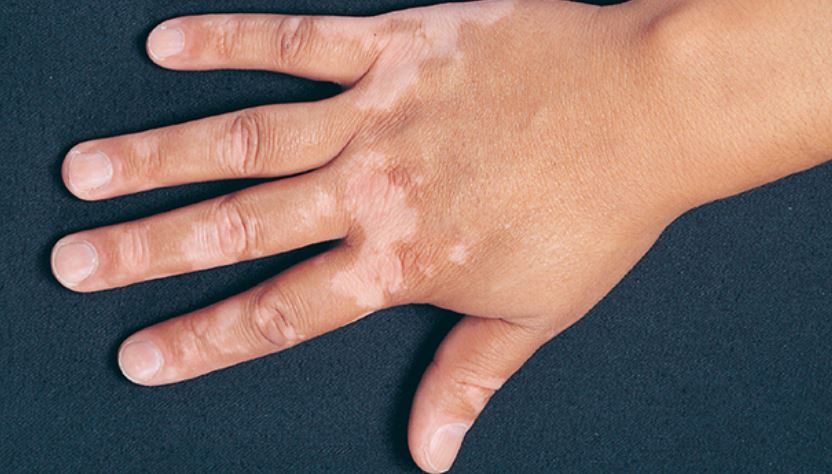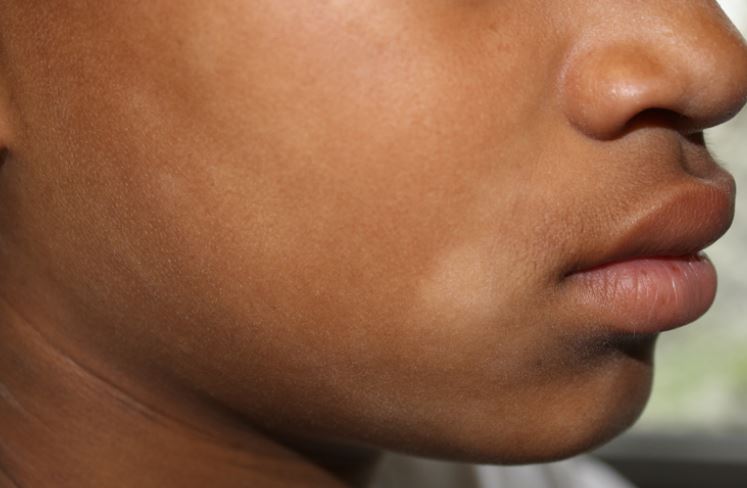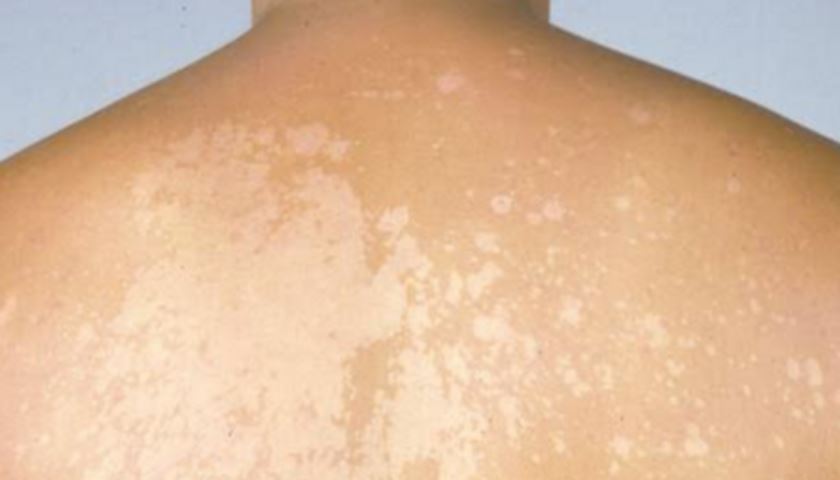White patches on the skin have emotional and psychological consequences. Their formation would be influenced by an anomaly in melanin which could lead to loss of skin cells. We shall cover causes, remedies, and treatments.
Causes
Table of content
Do you have white patches on your body? You are not the only one. It can be a problem for anyone – famous stars and icons.
1. Vitiligo white patches
What is Vitiligo, the causes and what does it look like on the skin? It is a dermatological condition in which skin patches develop on various parts of the body causing depigmentation. This loss pigmentation is due to the destruction of the melanin-bearing cells called melanocytes and results to white patches.

Causes
Vitiligo is not caused by a single factor. However, more reliable evident medical facts show that people with autoimmune diseases are at high risk of developing Vitiligo. They include rheumatoid arthritis, lupus, hyperthyroidism, adrenocortical insufficiency and type 1 diabetes also called Insulin-dependent diabetes mellitus (IDDM) or Juvenile diabetes.
According to a research report by National Institutes of Health, people with this skin condition can pass on the genes to their offspring. This is a scientific theory that gives evidence that Vitiligo can run in families where few individuals carry the inherited genes. For instance, some people produce cytokines that alter melanocyte cells ultimately causing them to be destroyed.
Affected areas
The common areas for Vitiligo include the face, back, on arms, feet hands and chest. The patterns of depigmentation largely depend on factors thought to cause melanocyte cell destruction. Thus, focal pattern (small area), segmental (one side) or generalized pattern through which the white patches can spread all over with no pattern.
2. Tinea versicolor fungus
Tinea versicolor is a fungal infection caused by excessive growth of Malassezia species which alter the color of normal skin. White patches due to Malassezia globosa are characterized by itching. These patches could also be brown, pink, brown, etc.
How will you differentiate Tinea versicolor from other skin patches? The white patches are characterized by sharp edges that hardly darken even after a sunburn. They are more visible during hot weather than during the winter. In fact, they tend to become less visible or disappear in the fall. Typically, this infection is common in regions along the tropical.

Prominent areas where the fungus loves to grow include the chest, including the upper and lower abdomen. Nevertheless, they may appear anywhere on the skin. Statistically, more youths and young people of either sex are affected by Tinea than there are cases in older people.
3. Pityriasis alba
The causes for Pityriasis alba still remain unclear. Unlike Tinea versicolor, the melanocytes are not destroyed but rather a depletion process occurs whereby the production of melanin is interfered with.
How does Pityriasis alba lead to these patches on the surface of the skin? This disorder is typical of oval-shaped or round red or pink patches at inception. Usually, these patches go away on their own but creams are used in some instances. Now, as the patches disappear and after they have cleared, loss of skin color normally results in light-colored or thin plaques on the affected areas. This is known as hypopigmentation.

The pink patches may be slightly scaly unless they have discolored. Tests or examinations could also be carried out to diagnose and to exclude the possibility of the condition being fungal. They include mycology and skin biopsy with the latter least required.
Even though, it is believed that Pityriasis alba is associated with eczema which is by far common in children. There is a likelihood of the disorder occurring together with eczema when present in the skin. (But still, eczema is not the cause).
4. Leucodema

Leucoderma is another non-contagious “acquired condition with localized loss of pigmentation of the skin that may occur after any number of inflammatory skin conditions,” [Wikipedia.org] such as burns and after dermabrasion.
According to Ayurhealthline Herbal Centre, a defining characteristic is noted at inception. While Vitiligo is kind of a “self-initiated” depigmentation, Leucoderma can be influenced by repeated inflammation in the skin as stated. There is an increased probability of this harmless condition to be merged with Vitiligo as backed up by a comparison of symptoms between these two.
5. Lichen sclerosus
Going on with causes, lichen sclerosus is another non-infectious condition. Its occurrence is post menopause in females. Men and children can also be victims of lichen sclerosus but are rare in children.
General symptoms observed are;
- Itchy white patches on genitalia (vulva in females and foreskin in males) sometimes upper arms, breasts, shoulders
- Pain during sex, and removal of feces
- Soreness in affected area caused by cracking skin or formation of blisters,
- Hurting erections in males due to a firm foreskin on penis
6. Nevus depigmentosus or halo naevus
A typical halo naevus is one with a white ring or halo around a mole. Halo naevi are not of much concern because they are non-malignant moles and are not signs associated with skin cancer. Its real cause is not known. However, some dermatologists think it is due to an abnormal autoimmune process which results in formation the white rings.
If you have naevi depigmentosus, ensure that you wear a sunscreen to avoid sunburn or damage especially during the summer. This condition does not necessitate treatments because they are not a health risk. You are encouraged to go for a regular checkup.
Apart from that, there are more causes of white patch or spots appearing on your skin.
- Long-term or short-term effects of ingestion of foods with insecticide or pesticide sprays
- Body poisoning and build-up of toxins in body tissues
- Lesions e.g. Idiopathic Guttate Hypomelanosis
- Vitamin deficiency symptoms of vitamin B12, Zinc, Calcium, etc.
- Diaper rash
- Inherited traits and birthmarks
White dry patches on skin
In relation to skin conditions, dryness can be aggravated or triggered by a number of things regardless of whether the conditions themselves account for white spots or patches or not. Such a skin disorder is Pityriasis alba ‘light patches on skin’. Occurring mostly on sun-exposed body parts – on the face, side, and front of cheeks, upper arms – too much sunlight can influence it.

According to a life experience of Dr. Greene founder of DrGreene website, some forms of eczema (including nummular eczema) can trigger dryness. Sun rays Tinea versicolor,
Obviously, your skin face is occasionally at risk of catching sun rays. In fact, many more people end up with dry skin during summer because after sun exposure some conditions are likely to worsen and symptoms flare up. Sometimes the dry patches which persist could be an indicator of vitamin deficiency.
Treatment
Treatment for white patches on skin is not easy due to unknown causes. If you feel a compulsive force and feel cannot stand the psychological pressure talk to your doctor.
Vitiligo cure
Is Vitiligo curable? Medical treatments can be useful in reducing severity in the patches and control the rate at which they spread hence reducing depigmentation. However, 100 percent success is not guaranteed in certain circumstances.
a. Vitiligo treatment with laser & Grafting
The laser is one of the treatment options for Vitiligo. According to your dermatologists’ recommendations sometimes a non-cultured grafting may be initiated before laser can be applied. The laser is basically meant to remove the patches.
In grafting, a thin patch of healthy and unaffected skin is extracted from your own body after which it is cleansed and its cells removed. If properly done, the cells then grow and regenerate new cells.
b. Phototherapy
Phototherapy is a better treatment for Vitiligo at the moment. It works by stimulating the melanocytes resulting in pigmentation. However, it may be limited to certain skin types, especially in some regions.
Before arranging for treatment, clients should be made aware of its pros and cons.
c. Bleaching creams
Bleaching using creams is effective when the patient’s skin has almost been replaced by Vitiligo such that a larger area is covered by the patches. In reality when Vitiligo overwhelms it then the minor skin complexion is bleached instead.
d. Immune-suppressive drugs
These medications together with phototherapy have shown to improve severe Vitiligo in some individuals. These drugs must be prescribed by a dermatologist and be used while patients are under supervision.
e. Natural Vitiligo treatment
If you are embarrassed with the discoloration due to Vitiligo patches all over your face, arms. Home remedies should give you hopes of reviving your skin after cure. Read on we have a few procedures which you can follow and do at home.
Medicine to use
Medications used to control or treat infections include:
Antifungal medicines
The main categories of this medication are topical prescription and Over the Counter oral drugs and creams.
OTCs
For you to safely treat white patches or spots on skin due to fungal infections like Tinea versicolor, it is recommended you see a health practitioner for proper medical advice. Examples antifungal creams, lotions available include Clotrimazole, Miconazole, and Terbinafine.
Prescription medicines
If the fungus becomes less responsive or symptoms do not go away see your doctor for prescription-strength antifungal drugs.
Topical steroid creams
If you are itching or the white spots cause itching, both Over-the-counter and prescription steroid creams should help you out. Calcineurin inhibitors, Pimecrolimus cream, Tacrolimus and Hydrocortisone creams or ointments.
These creams are a good relief for inflammatory reactions due to Lichen sclerosus and Tinea versicolor.
Home remedies
These natural methods can only help to reduce depigmentation of the skin caused by certain skin conditions and infections such as fungal or bacterial diseases.
1. Anti-dandruff shampoo
Some shampoos can also relieve symptoms, especially for white spots going to tan. Selsun blue and Ketoconazole shampoos are quite effective for adults.
2. Radish seeds + apple cider vinegar
For small area covered with itchy and dry patches follow this daily procedure.
Procedure
- Grind a cup of radish seeds to powder form.
- Add a little amount of dilute apple cider vinegar and stir vigorously.
- Apply directly onto the patches and then leave it dry and absorb moisture.
- Wash after 30 minutes.
- Apply a thin layer of olive oil to soothe and keep in moisture.
- Leave it for another 20 minutes and wash with lukewarm water.
3. Turmeric powder
The antibacterial and excellent properties of turmeric make it one of the natural best. If it is well utilized and consistently it will keep bacteria at bay.
Prepare a paste of turmeric and mustard oil. You may apply to the light patches on face and arms. You may also add a few crushed Neem plant.
4. Red clay & Ginger
Red clay has a trace of vital minerals required by skin and blood for healing and repair. Prepare lemon + water and mix it with ginger to drink.
Other healthy
- Measures to control sweating
- Use of medical cleansers
- Avoid exposure to sunlight
- Cosmetics to camouflage or hide the patches under the areas of affected skin.
- Sometimes micro-tattoos can be created on the skin to create rather a semi-permanent effect. Remember that this must be done by a professional and not a tattoo artist.
Sources of Reference
- http://www.medicinenet.com/vitiligo/article.htm
- http://www.everydayhealth.com/tinea-versicolor/guide/
- http://www.enkivillage.com/white-patches-on-skin.html
- P http://www.healthline.com/health/pityriasis-alba#Overview1
- http://www.skincancer.asn.au/page/1124/learn-about-vitiligo
